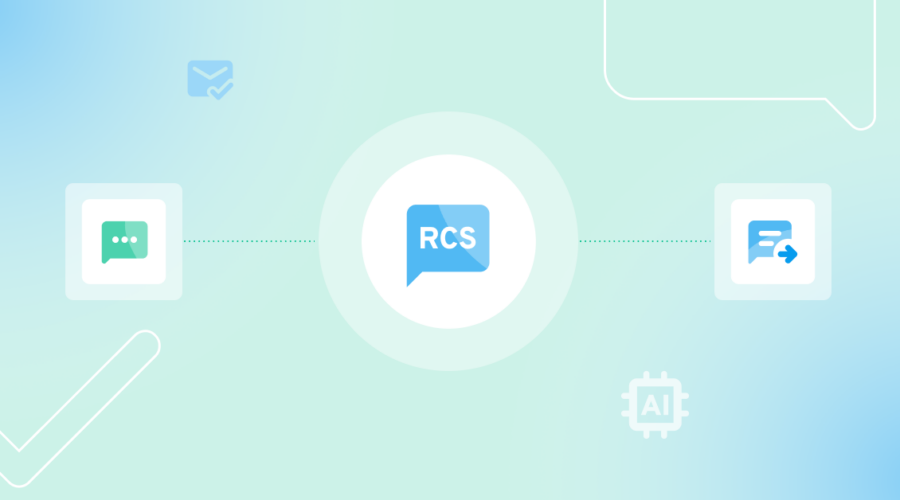Messaging is revolutionizing education from daycare to doctoral programs. But Ed tech companies need to be aware of the unique nuances, challenges, and perks that come from application-to-person (A2P) texting as an educational entity.
How texting is making life better for students and families
Facilitating conversations
We know that homework completion rates go up by 40% when elementary teachers and parents have regular, informal conversations. But that’s difficult in an age with limited teacher resources and diverse student populations. Enter DeansList, which assigns teachers individual 10DLC numbers to text parents with automatic two-way translation in 100+ languages.
Sharing urgent alerts
Platforms like ParentSquare make it easy for students and parents to keep tabs on important updates, like safety alerts, weather closings, and more. Whether it’s a certain classroom or bus route that’s affected, or the entire student body, these smart alerts can be used for both mass announcements and individual notifications for lunch account balances and overdue library book reminders.
Promoting positive psychology
SchoolPulse facilitates students sharing what’s on their minds, with a mission of preserving and promoting mental health. And it’s all done on a student’s phone – the channel with which they feel most familiar and comfortable.
Encouraging academic engagement
SendHub makes it easy for teachers to text assignment files and reminders to students via text. Gone are the days of relying on paper planners to keep tabs on due dates!
Texting gives you the widest reach
SMS continues to be the most accessible communication channel across generations, socioeconomic levels, and geographic locations. While not every family has a smartphone or internet access, nearly every adult (and many children) has a cell phone that can receive SMS messages. So when you want your audience to get your messages, SMS is a no-brainer.
Email is the leading competitor channel in education, but often has open rates around 20%, compared to 98% for messaging.
On the other hand, one downside is that your campaign class may include throughput limitations, which we’ll address below.
Choosing your number types for educational texting
Short codes
Short codes are preferred for crisis alerts because they give you the most reliable delivery. The downsides are a longer time to market when you’re registering new campaigns, a higher price point, and an inability to add voice enablement.
Keep shortcodes for time sensitive, mass alerts instead. Note: shared short codes are no longer officially sanctioned, and should not be used for messaging in the education space.
Toll-free numbers
When you’re looking for a happy medium, toll-free might be your best bet.
Toll-free numbers can be voice-enabled, generally give you higher, more reliable throughput, and have credibility as consumer-trusted numbers.
They used to take slightly longer to get verified and start sending vs 10DLC, however more recently the time to market has been on par with 10DLC.
10DLC numbers
When you want to highlight a local presence and ensure a quick-to-market route, choose 10DLC numbers. They give you a sense of local presence because you can choose your numbers’ area codes to correspond with individual school locations.
Another upside is that 10DLC numbers can be voice-enabled for texting and voice calls on the same numbers.
The downside is that 10DLC numbers are not typically suitable for crisis alerts, since they can have lower throughput, and higher chances of blocked traffic.
Matching your use case to your number
When you’re putting together a portfolio of numbers, keep in mind that your main use cases will have corresponding number types:
- One-to-many – General alerts and notifications
- These are sent mostly at the District or School level, like school delays or cancellations
- Can be sent via short code, toll-free, or 10DLC
- One-to-many – Urgent alerts and notifications
- Sent in crisis situations, or times when it is most important for all recipients to get notified immediately
- Need to be sent via a high fidelity number type, ideally short codes or potentially toll-free
- One-to-One
- Conversational, sent mostly at the teacher level, like a teacher texting parents to follow-up on parent-teacher meetings, or checking in on a missing homework assignments
- Best suited for 10DLC numbers
- Mixed
- Mix of Alerts and Conversational, mostly sent at teacher level. For example a teacher sends standardized report card reminders, and then has a follow-up conversation in the same messaging thread. While multiple number types may be appropriate, it’s best practice to maintain one use case per number type.
- Toll-free and 10DLC are both good options
When you’re ready to take the next step in creating an effective messaging campaign, we’d love to talk through the best approach for your unique situation.




